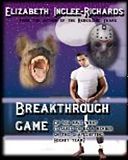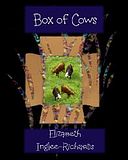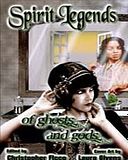I thought this was a good place to stick the primitive European horse. I have to admit that the ‘primitive’ horses have always fascinated me. So before I start talking about eastern horses I thought we should talk about the primitive markings.
Plus it gives me an excuse to talk about my horse. I’ll talk about her more when we get to modern New World horses.
First I should define wild and feral.
Wild animals have always been wild, individuals may be tamed, or even domesticated but as a whole the populations have not been interfered with by people. Zebra are wild.
Feral animals come from stock that was domestic once but now run wild. Mustangs are feral.
Two other terms domesticated and tamed.
A tame animal is an animal you can touch, but pretty much that is all you can do with them. Chincoteague ponies are tame. You can go to the park and touch them, or at least some of them.
Domesticated animals live and work alongside humans. We are interdependent.
There is a lot of controversy about whether or not there are any true wild horses. I don’t really care if there are or not, but if I was pressed I would fall on the side of there aren’t wild horses.
I know it is semantics.
Anyway back to primitives.
Primitive breeds include the Przewalski’s, Tarpan, Konik and Heck Horses. That isn’t an inclusive list, some primitive breeds are going to be covered in other posts and I mentioned them when I was talking about the Viking horses.
 Tarpans
Tarpans
 Tarpans
Tarpans
The Primitive horses are small with shorter legs, straight shoulders, high backs and strong necks and they have primitive markings.
They are generally dun.
A dun has the body color from a sandy yellow to a steel gray, they have darker legs manes and tails. All duns have dorsal stripes, a stripe that runs down the horses back.
Other primitive makings are guarder or zebra stripes on the legs, shoulder or transverse stripes crossing at the withers, dorsal barbs that come off of the dorsal stripe, rib marks, varnish, soot or shadow marks, darker marks on the horse’s body, zippers of light colored hair that runs up the back of the horses legs and with the zippers are often pared with light colored guard hairs in the main and tail.
Sometimes you will see a line running along the belly matching the dorsal stripe.
Faces are usually darker on the lower half, the ears will have darker markings (matching the dorsal stripe) and they may have light markings around the muzzle and eyes (mealy mouth and eye spots).
Primitive duns may have white or cream bellies.
Not all duns are primitive and not all horses with primitive markings are dun. My American Quarter Horse was a roan (mixed white and dark hairs all over the body) she had almost all of the primitive markings. If I had to classify her body type it have been more on the Baroque side. My little war pony.
 Sausage showing spider webs and eye patches
Sausage showing spider webs and eye patches
 Sausage showing spider webs and eye patches
Sausage showing spider webs and eye patches  Sausage showing guard hairs and garter marks
Sausage showing guard hairs and garter marks 





No comments:
Post a Comment